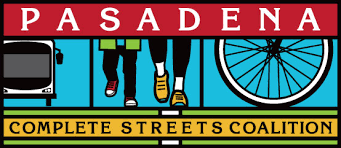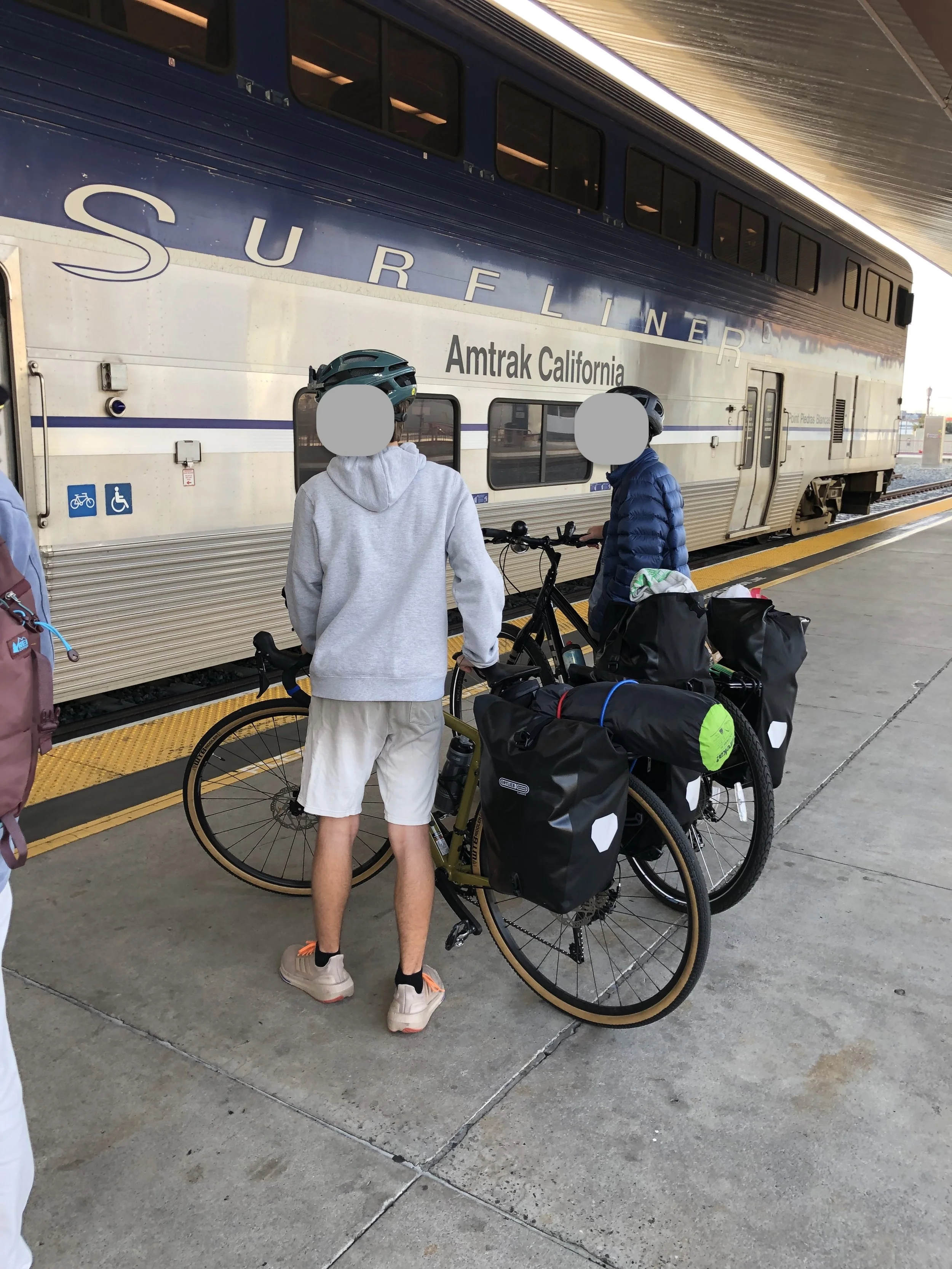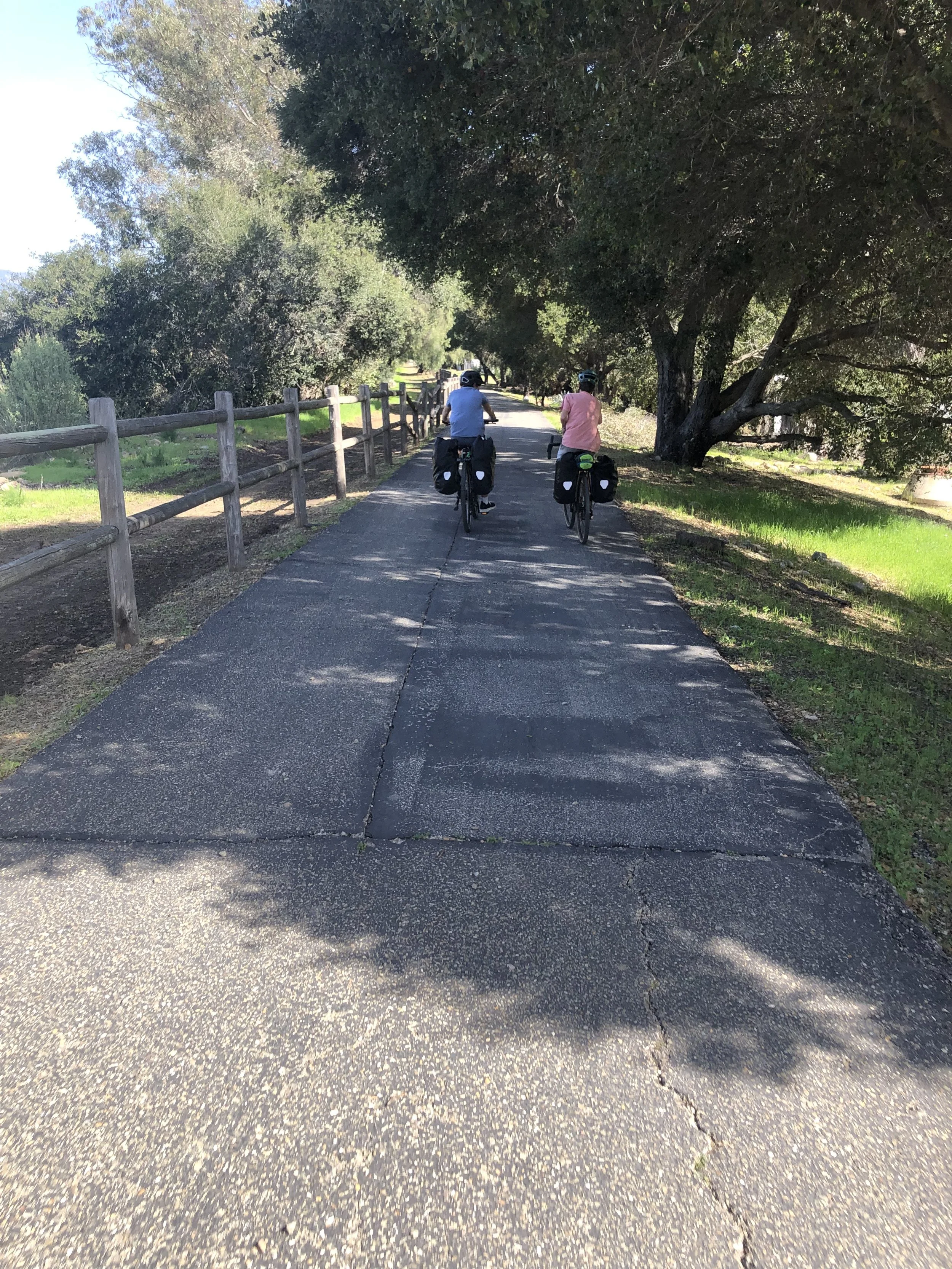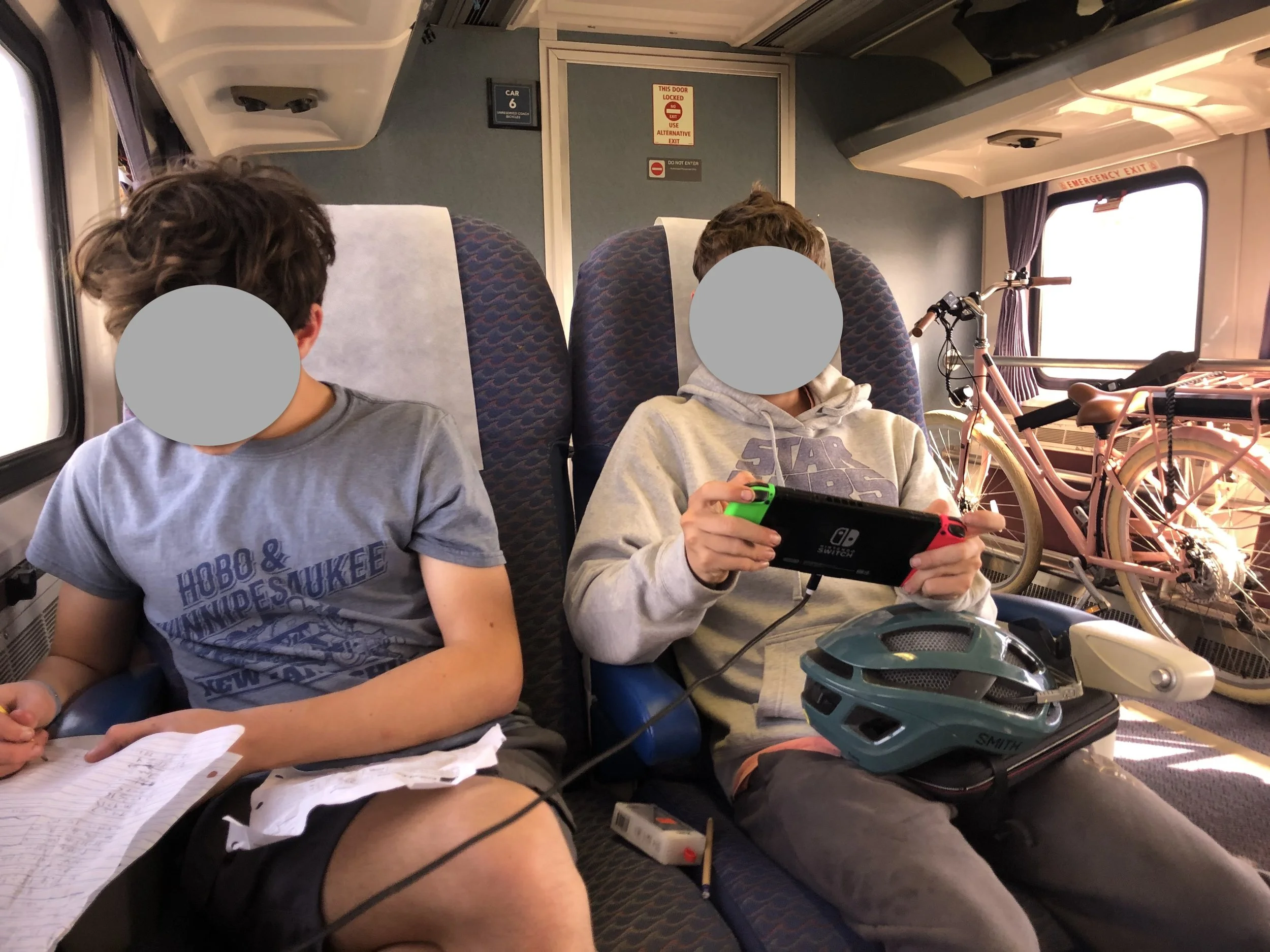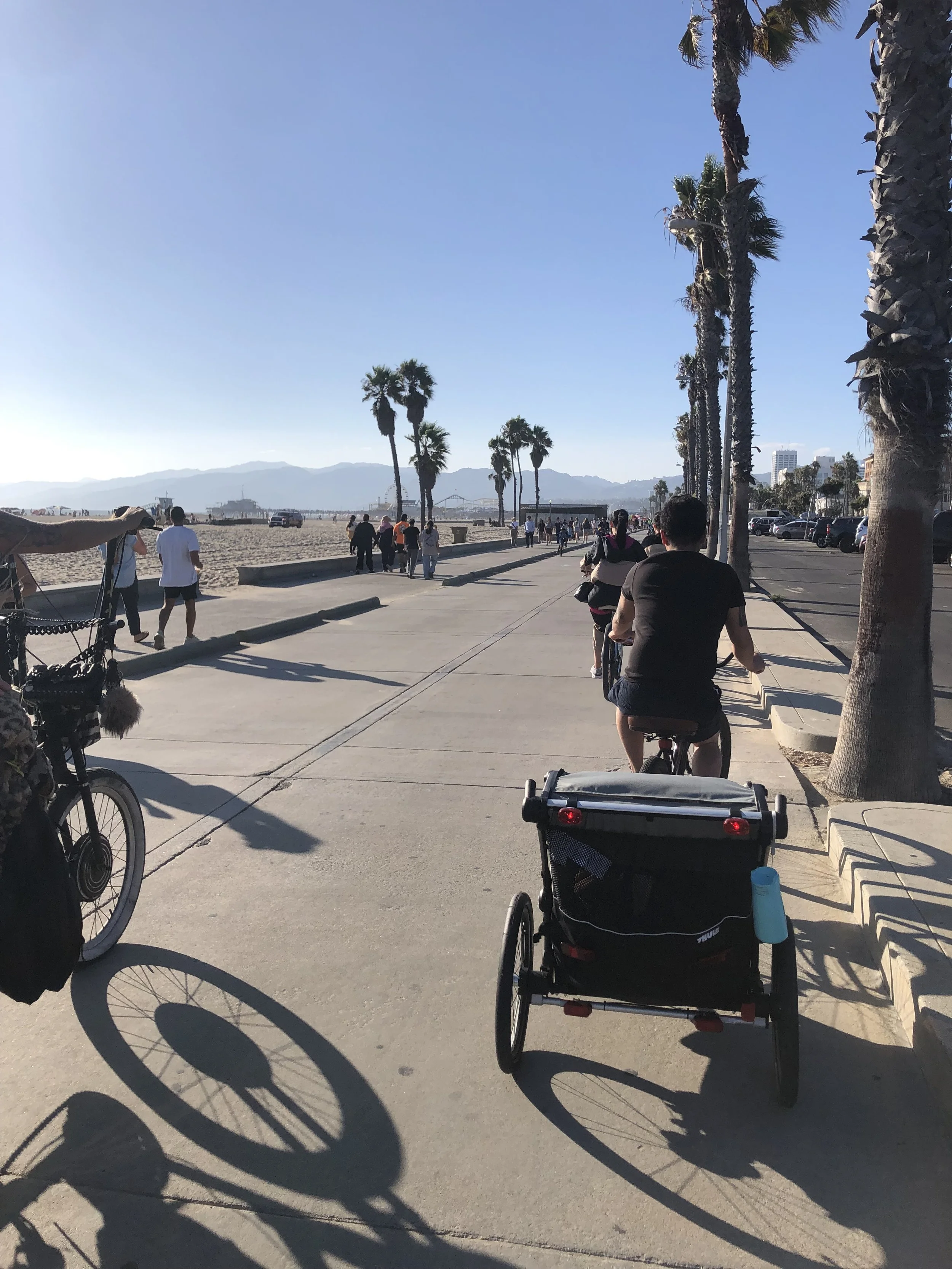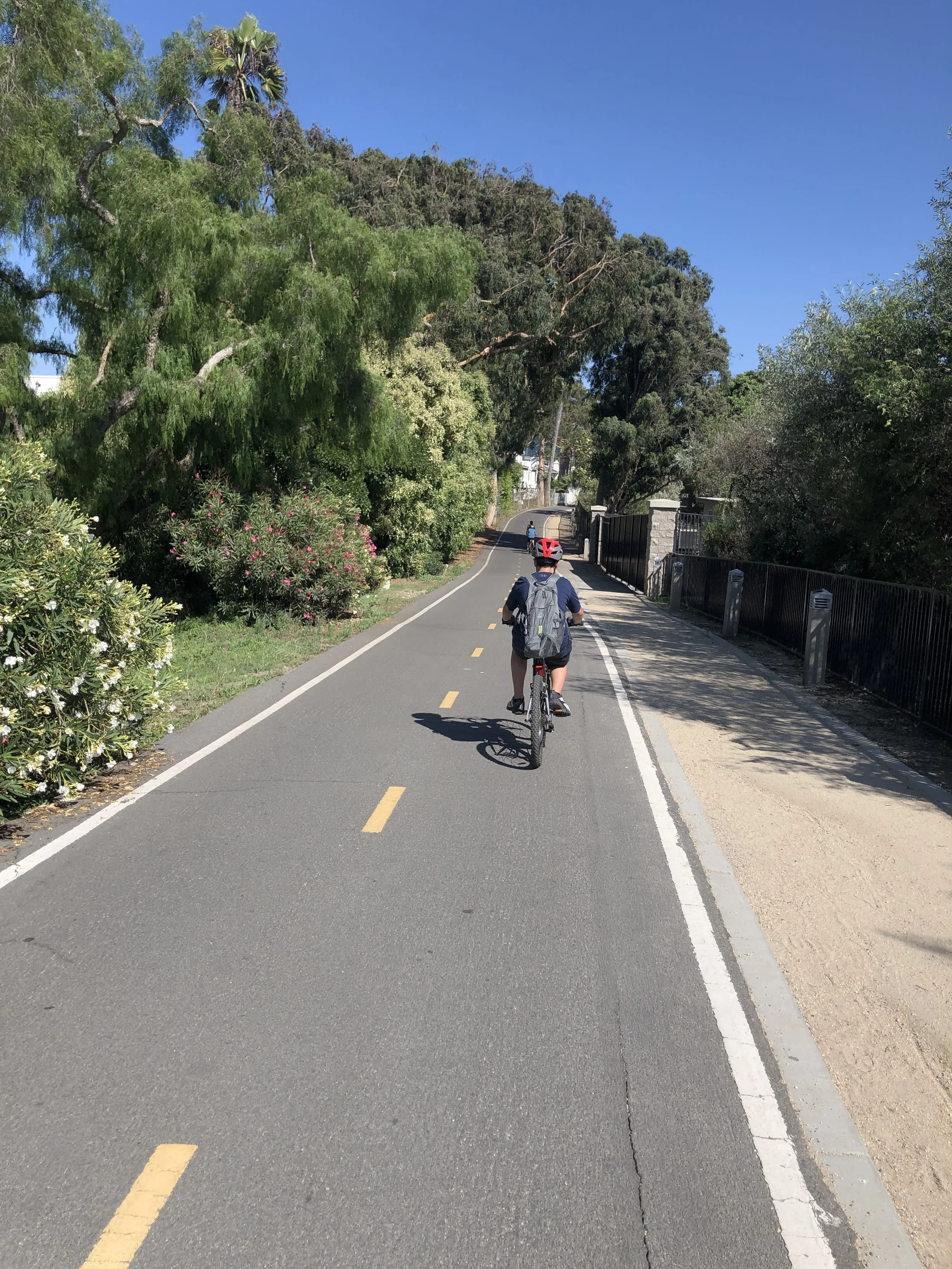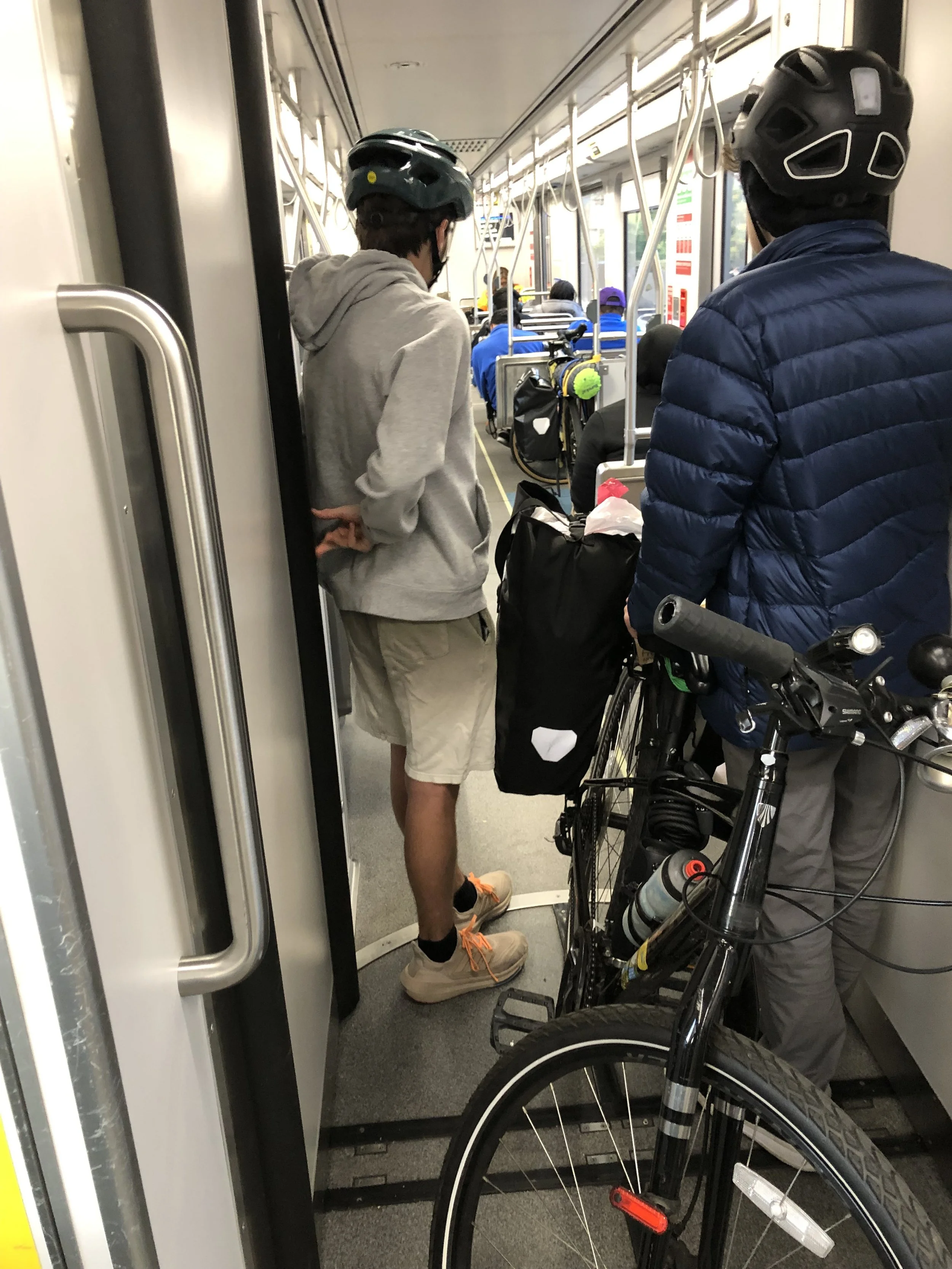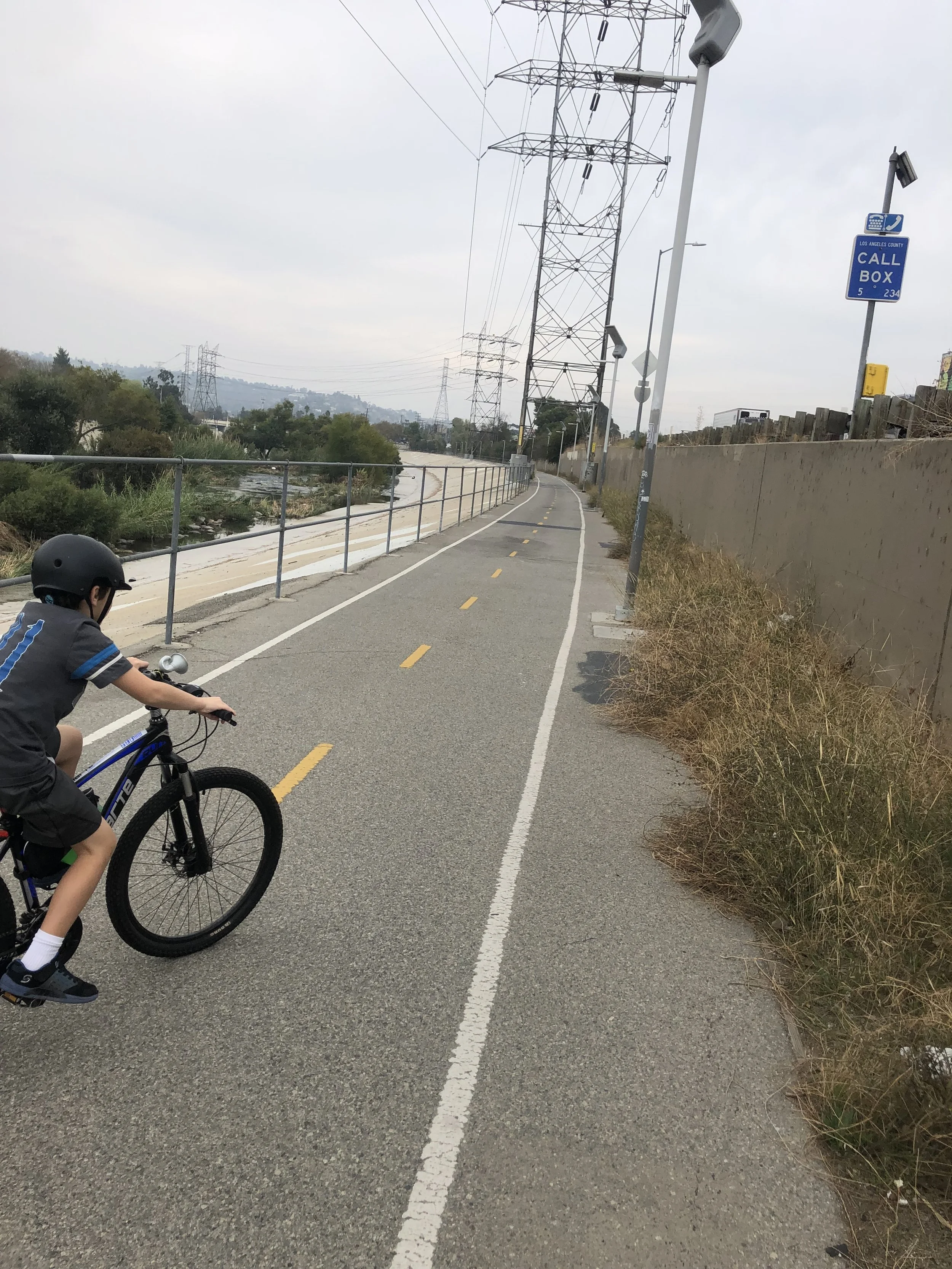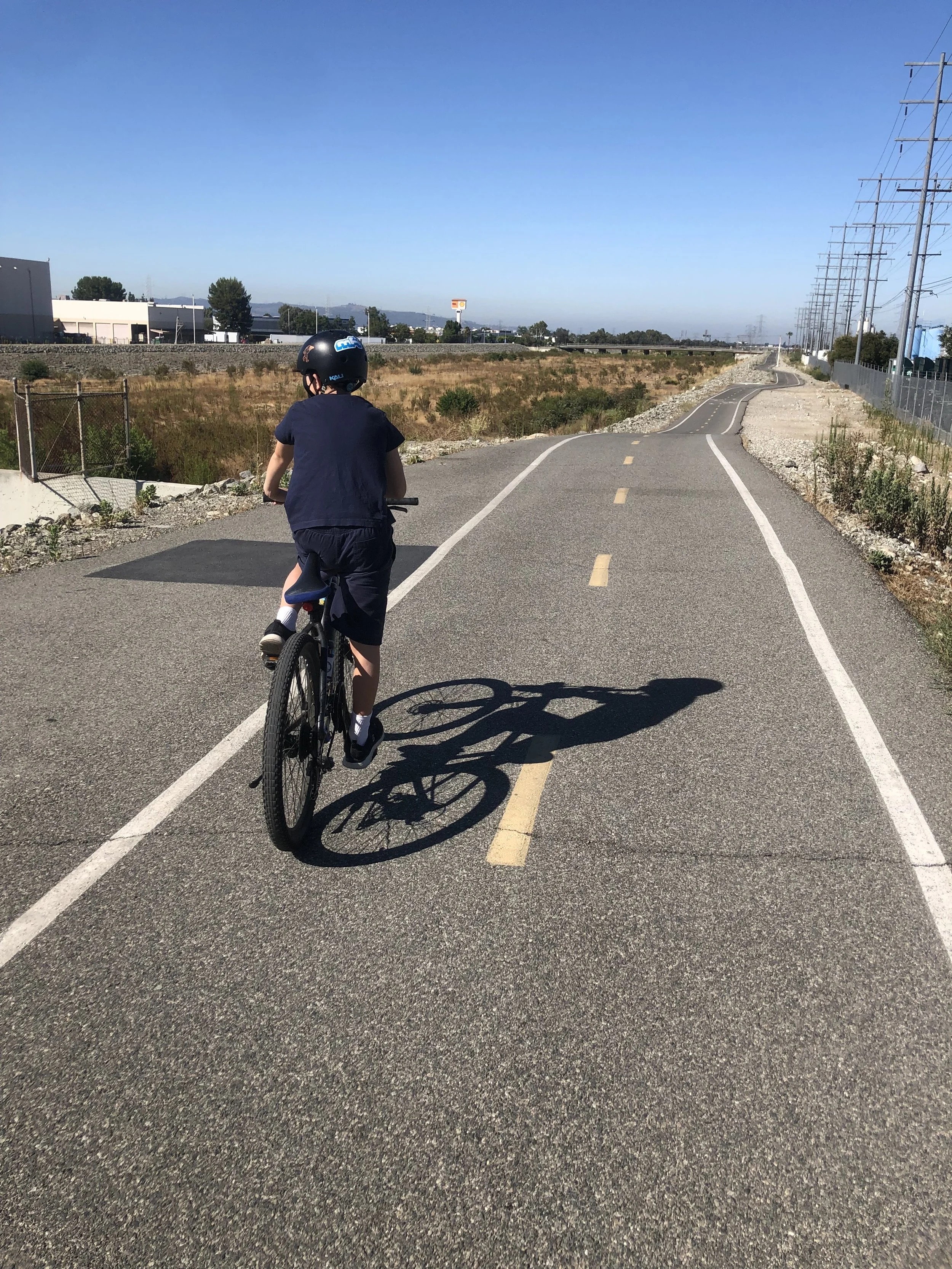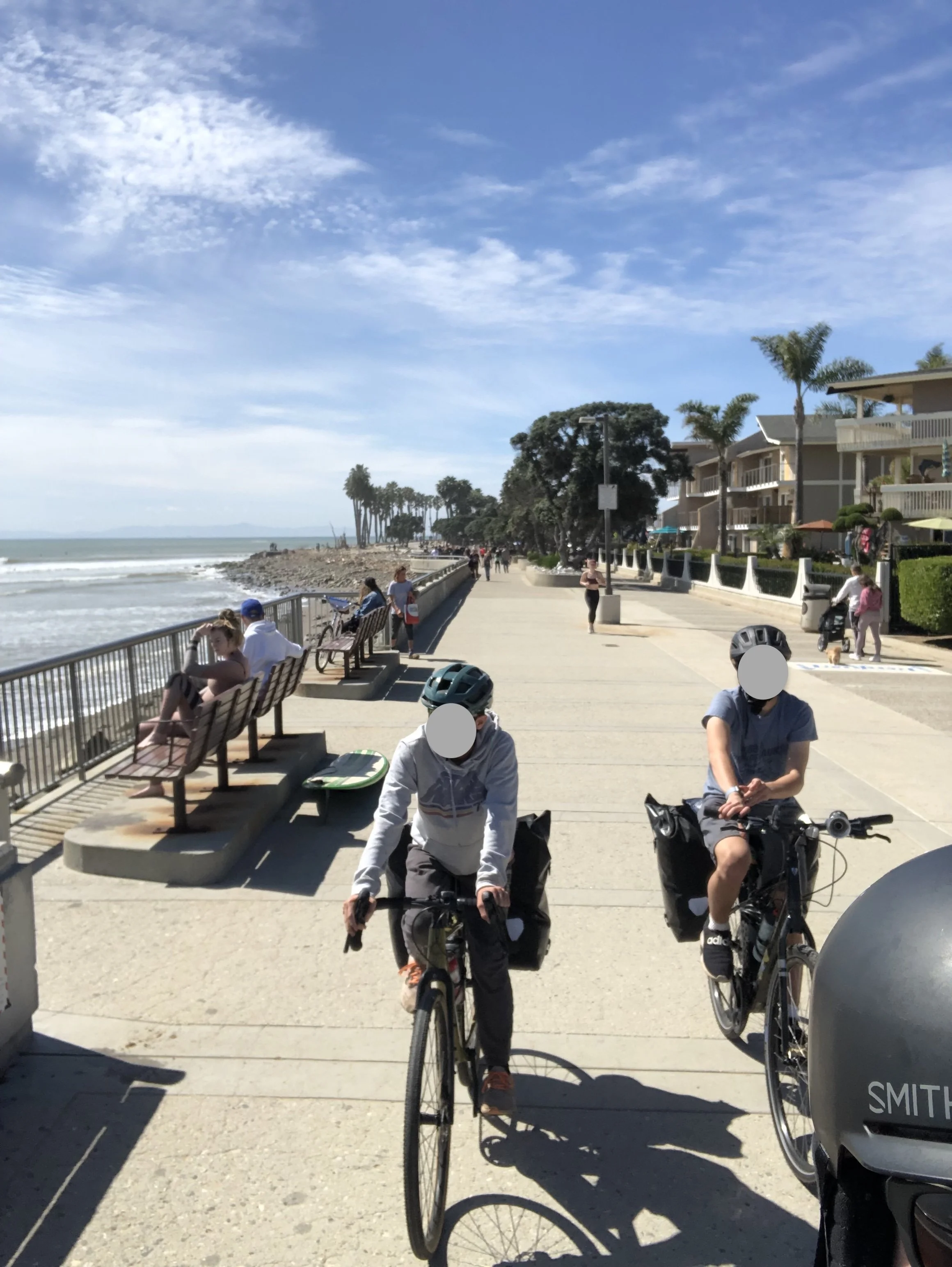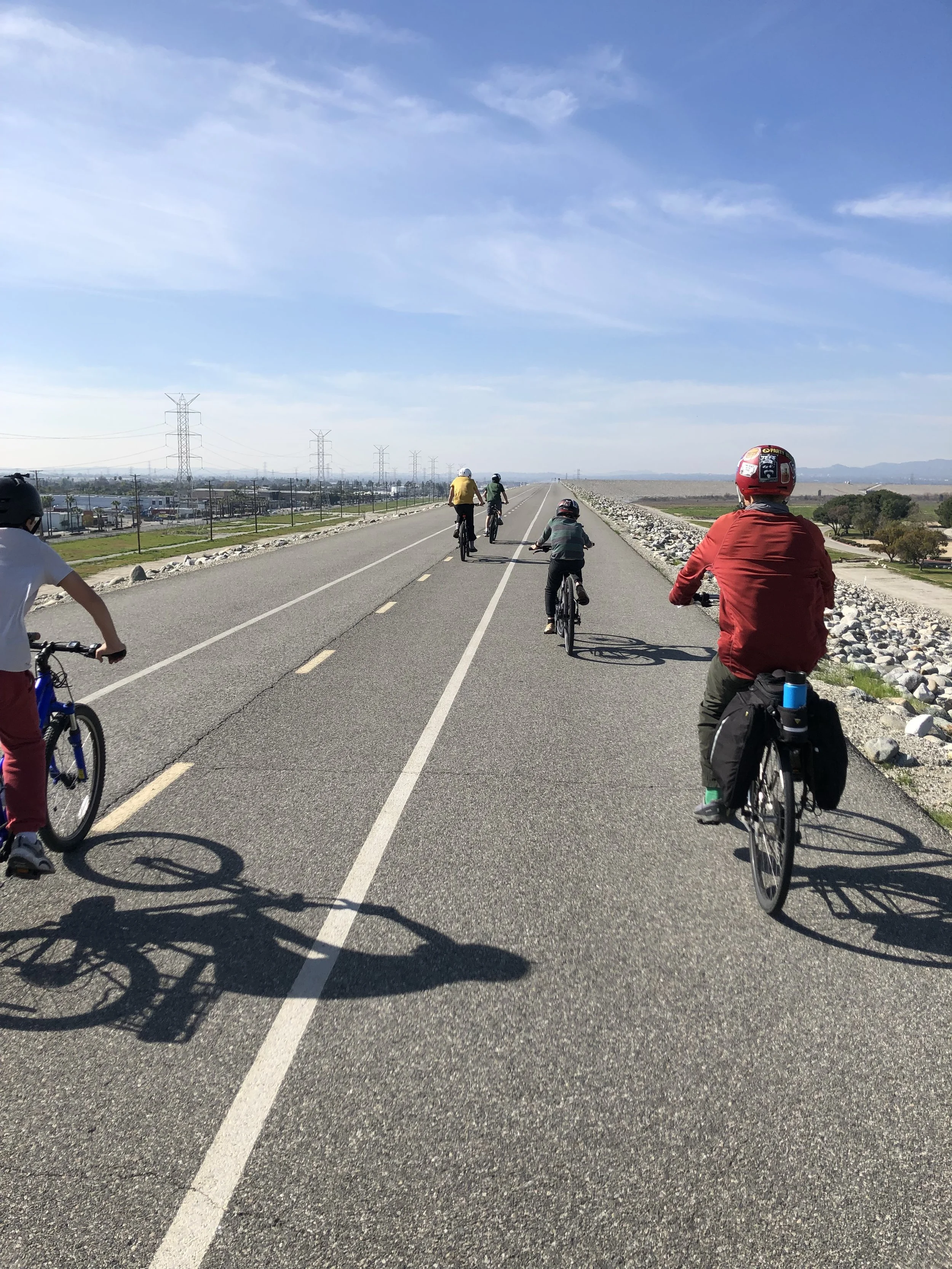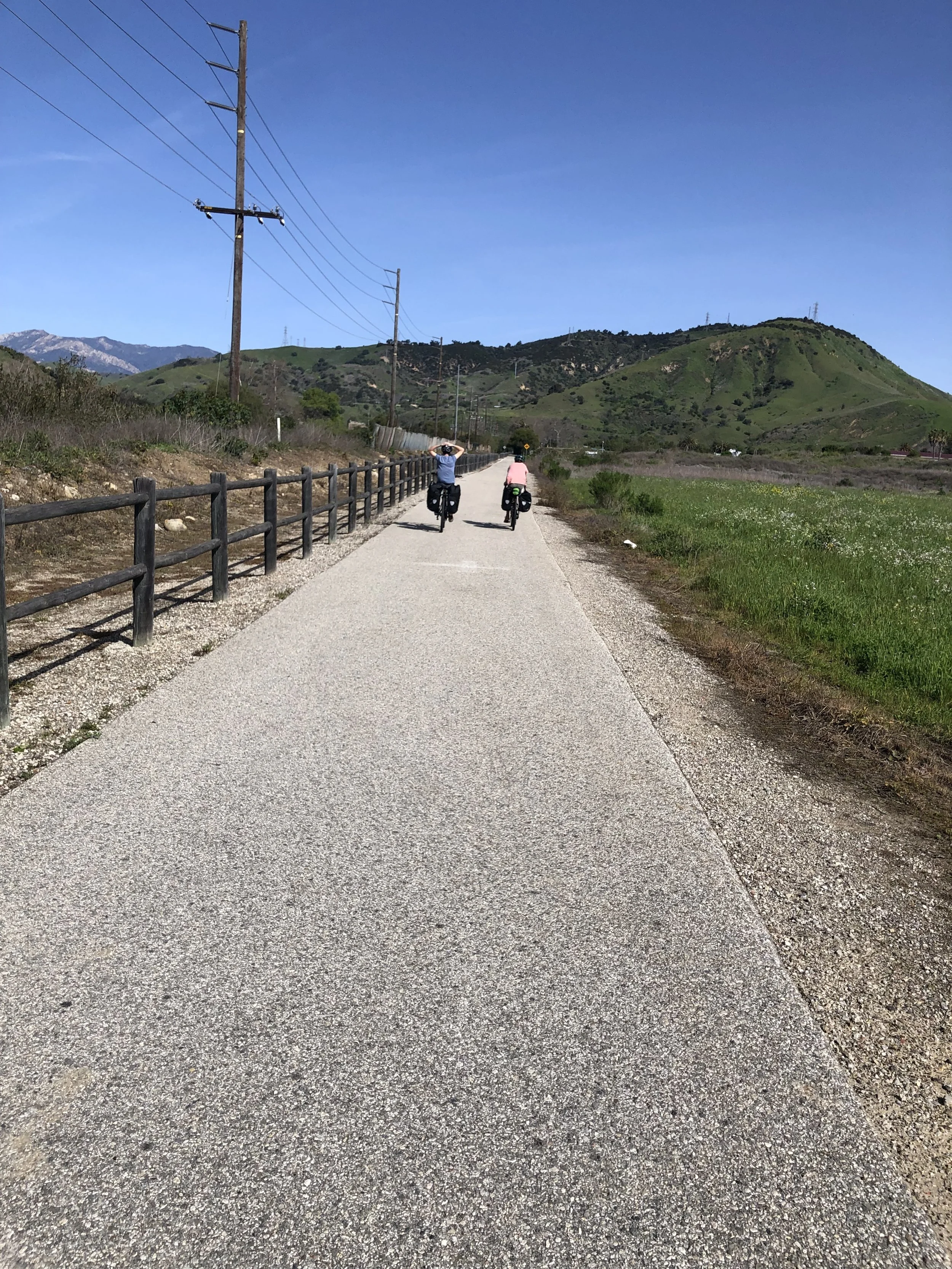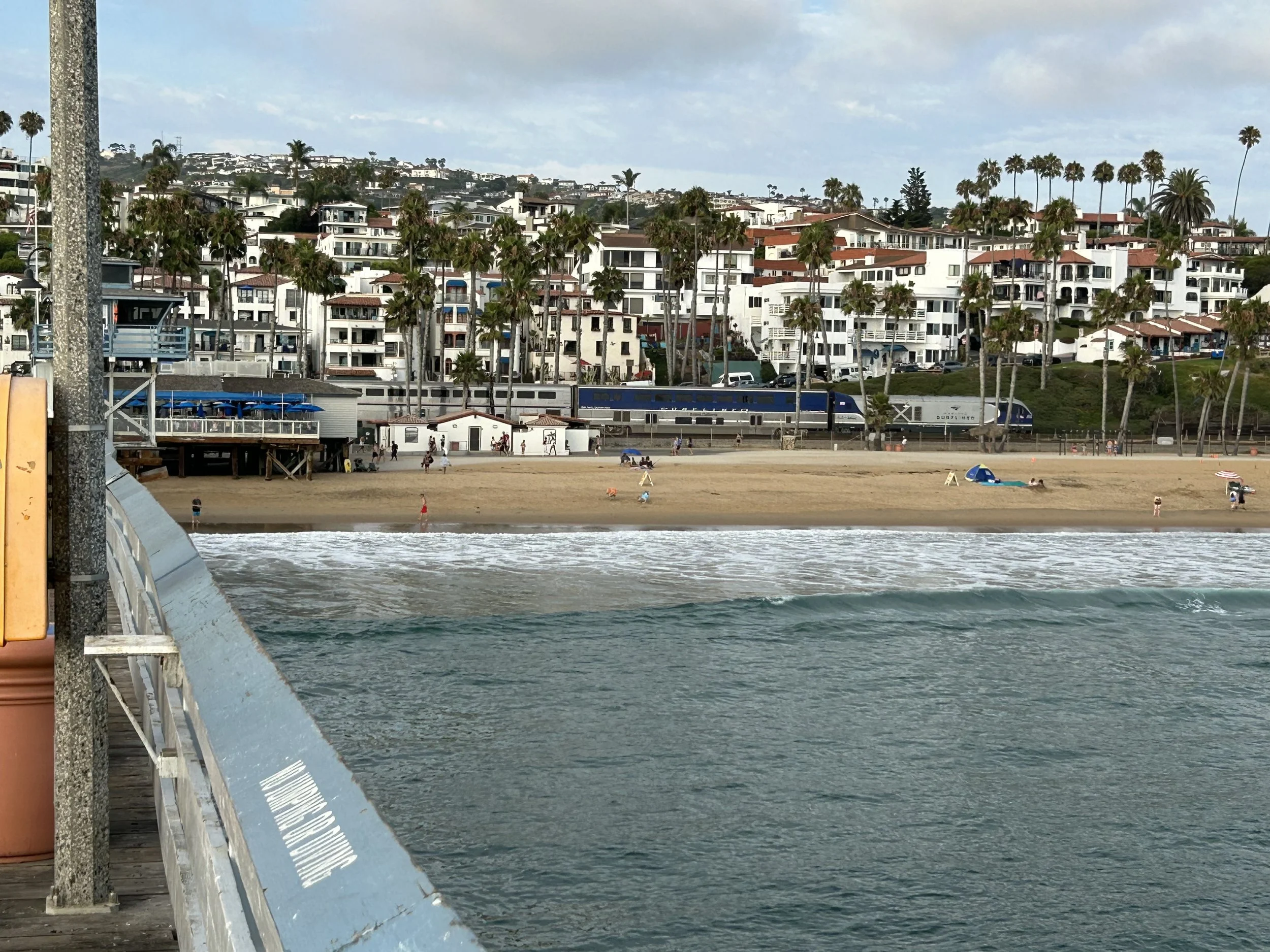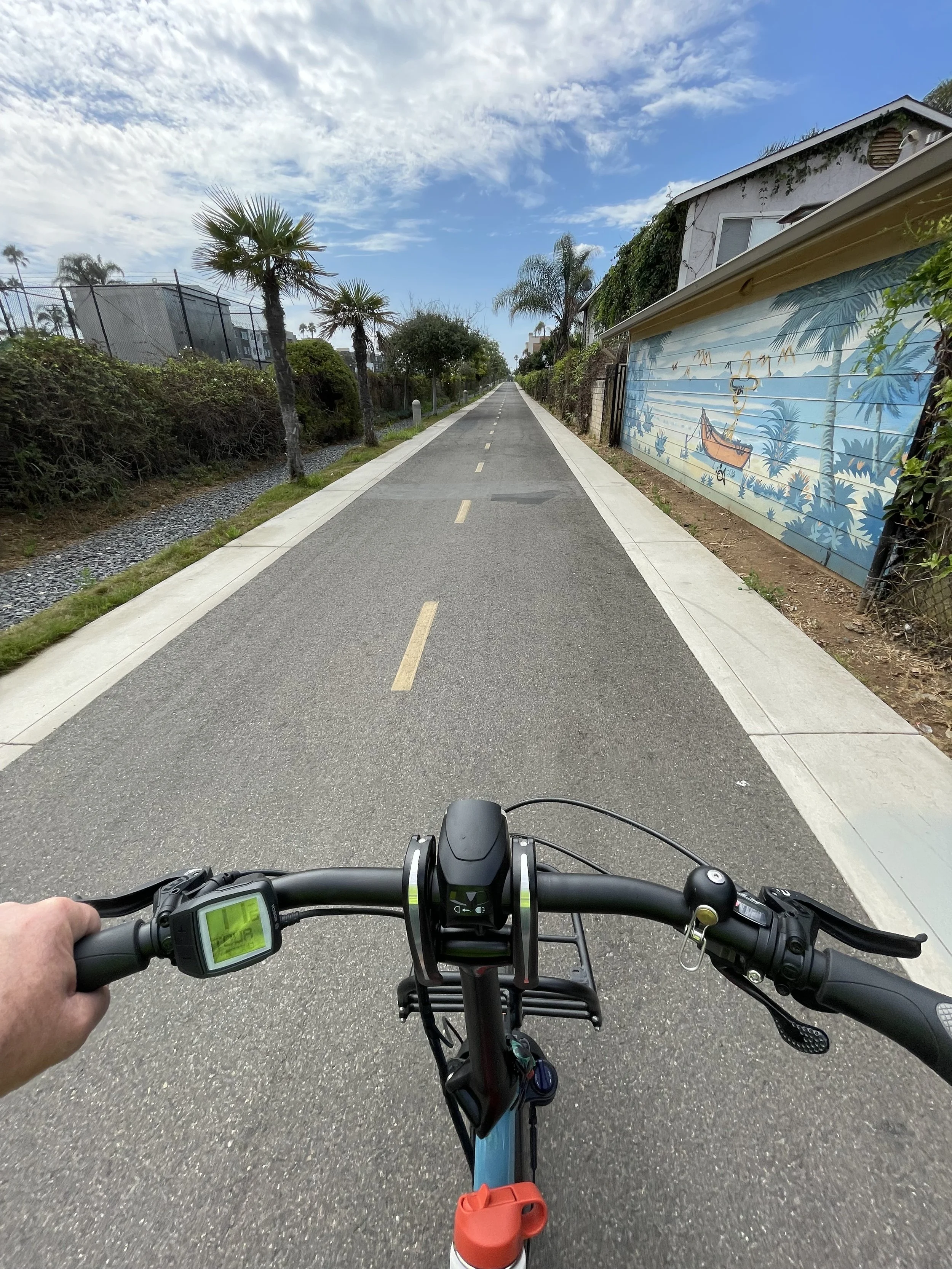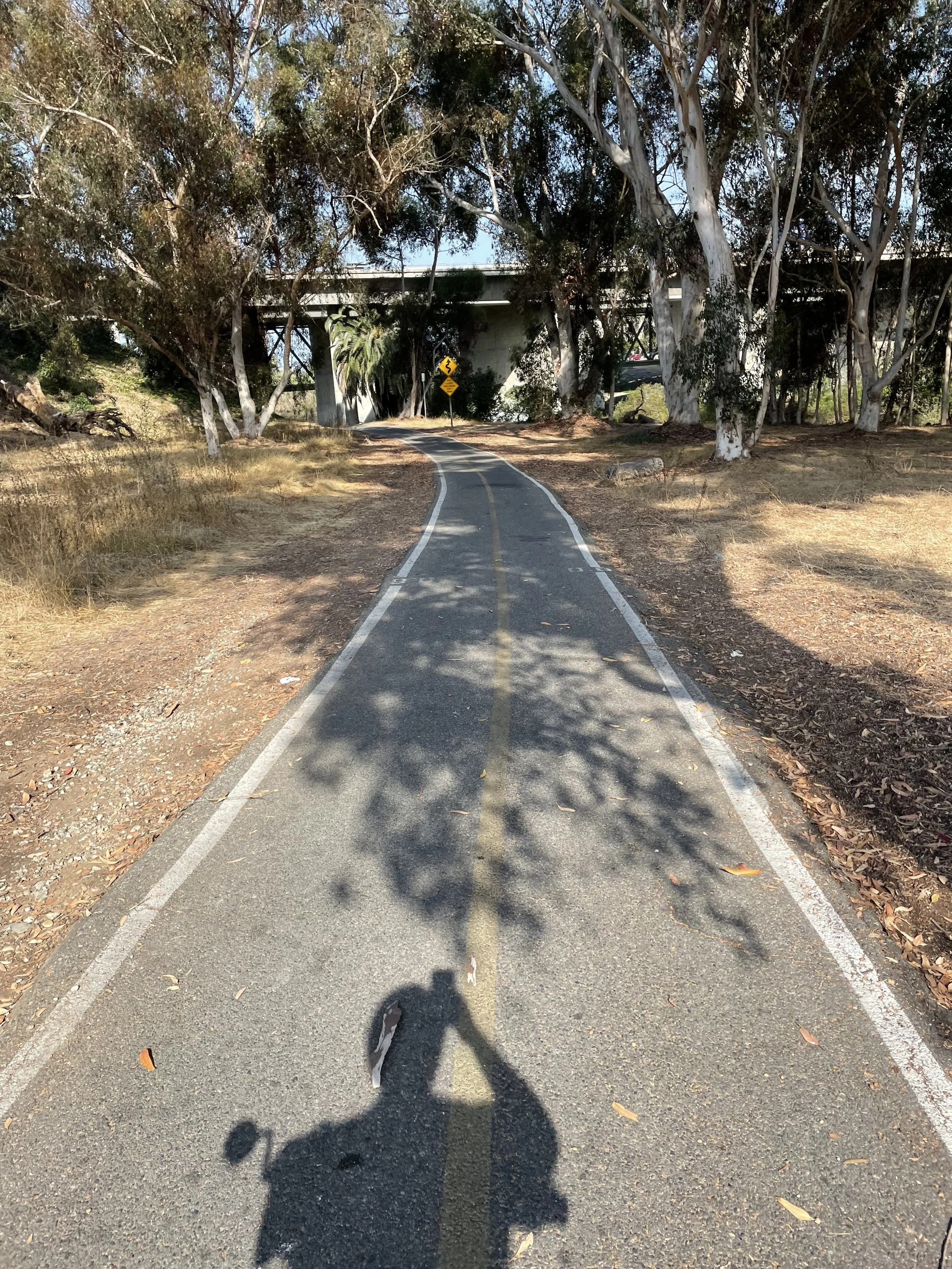Train to the Bike Path
Riding a train to the bike path, instead of taking a car, has a lot of advantages. Here is your guide to LA bike paths by train.
Why bring bikes on trains?
Trains are the most enjoyable way to travel long distances. Bikes (especially e-bikes) are perfect for trips under 3 miles. Put them together, and you can go anywhere, and have fun doing it.
Southern California has a number of nice bike paths, but getting to them can be a pain. For me, riding a train to the bike path, instead of taking a car, has a lot of advantages. Setting up the bike rack on the car takes time, and I worry about it damaging both the bike and the car. LA traffic is no fun, and for me, sitting cramped inside a car takes the fun out of a trip. Instead, I’d rather ride my bike out the front door, and then relax on the train.
Trains+bikes have another advantage, too: You can ride your bike one way, and take the train back. Riding from Pasadena, this often means riding downhill all the way!
How to bring bikes on trains in Greater LA
There are three types of trains in LA County:
Metro
Metro rides only cost $1.75, and you can bring your bike on any train. No reservations required. Cars with a seat-free area for bikes have a bike decal on the outside which doors you can use to access bike area. If the bike area is full, I like to put my bike between the cars so it doesn’t block the doors. Transiting LA has a great guide for riding Metro.
Metrolink
Don’t be fooled: Metrolink and Metro are not the same! Metrolink is the LA commuter rail. Tickets cost around $10, and the trains are bike friendly. They even recommend some more bike paths! You don’t need a reservation, and you can bring a bike onto any car. Look for a small bike rack at one end of the car, or the special bike car marked with a bike logo on the outside. You can buy tickets through the Metrolink app or at a kiosk at most Metrolink stations.
Amtrak / Surfliner
Amtrak trains are another great option. They are more expensive, but they offer services like an on-board café car and bathrooms. The Pacific Surfliner is the most popular for local trips. You can ride it north to Ventura and Santa Barbara or south to San Diego. Buy tickets online at amtrak.com before your trip or use the Amtrak app. To bring a bike on the train, you must reserve a bike spot when you buy your ticket. The bike reservation is free, but necessary, because space for bikes is strictly limited. When boarding, look for the bike car or ask a conductor where to go. Sometimes you can’t sit with your bike (!), so I recommend bringing a bike lock and securing the bike on the train.
Tips:
Plan ahead! Some trains only run a few times per day, so check the schedules. Transitions from train to bike path are sometimes tricky, so take a close look at the map and plan your route before you leave.
Bring gear. Carry a small back-pack or add a saddle bag to your bike. Bring water, sunscreen, and snacks, and be prepared to change a flat tire. I carry a bike lock, too, so I can park for lunch or shopping. You may also want to lock your bike on the train.
Use Apps. Amtrak and Metrolink both have apps where you can see train status and buy tickets. The app called Transit works great for Metro. There are good biking apps for route planning, like komoot or ridewithgps. Google Maps is helpful for planning, navigation, and finding lunch. Remember to charge your phone.
Enjoy the train! The scenery is always interesting and often great. You can bring a book, game, or podcast to help pass the time. If you’re riding Amtrak, the café car can be a highlight or you can bring your own food on-board. Also, people on trains are often friendly, so you might chat with a stranger or even make a new friend.
Best bike paths via train
The following set of trails are all paved, so they work well for any style of bike. They are also pretty easy to navigate and mostly flat, so they are good choices for riders of any skill level, including children.
Marvin Braude Bike Trail, aka “The Beach Path”
The Marvin Braude Bike Trail (aka The Beach Path, aka The Santa Monica Beach Path) is clearly the champion bike path of Southern California. Stretching 21 miles from Will Rogers beach (near Malibu) to Torrence Beach, it includes iconic locations like Santa Monica, Venice Beach, and the Redondo Pier. It's easy to access by train, too. The train ride is pretty long (over an hour), but the frequent service and low cost of Metro make this trip feel easy.
Directions: From Pasadena, take the Metro A-line to Little Tokyo, then switch trains to the E-line and ride to the Santa Monica station.
Ventura River Trail + Ojai Valley Trail
This is a gem! You can ride from Ventura all the way to Ojai on a 15 mile, off-street bike path. The trail is very popular, and goes through a number of different environments (some very pretty, some more industrial). The trail is also mostly flat and very safe, so it is great for beginners and kids. Both Ventura and Ojai have great restaurants and shopping. Ventura gets bonus points for including an awesome car-free main street which often has live music in the evenings. You can do this as a day-trip or stay at a campsite or hotel in Ojai. Train access is via the Ventura (or “Downtown Ventura”) station.
Directions: From Pasadena, start by taking the Metro A-line to Union Station, and then catch the Amtrak Surfliner to Ventura. Check schedules online and plan carefully, as there are only a few trains per day.
San Gabriel River Trail (North) + Santa Fe Dam
If you’ve never been, the Santa Fe Dam recreation area has a lot to offer. There are walking paths, playgrounds, picnic tables, a small nature trail, and a lake where you can rent kayaks or fish. You can easily get into the recreation area by bike after from the Duarte/City of Hope Metro station. There is a paved bike trail on top of the dam with great views, and then you can ride into the recreation area. If you follow the trail north, it goes about 6 miles through a nature area and then starts heading uphill toward the mountains. I had a fun day with my son and one of his friends riding the trail north, then coming back down to the Santa Fe Dam for a picnic. If you bring a lock, you could park the bikes and rent kayaks for a Peddle/Paddle day.
Directions: Easy trip from Pasadena! Ride the A-line to Duarte/City of Hope. There is a gravel parking lot directly across the street from the Metro station which is an access point for the San Gabriel River Trail. Use the traffic signal to cross the street, enter the gravel parking lot, and follow the gravel path to the bike path. The main bike path is paved - you’ll only be on gravel for a few minutes.
San Gabriel River Trail (South) + Rio Hondo + LA River (South)
From the Santa Fe Dam, you can follow the San Gabriel River Trail south a whopping 37 miles to reach the Pacific Ocean. The trail goes across LA County, reflecting the complicated composition of this area. Some parts are really nice, some are pretty run-down, and some are just strange. There are parks along the path where you can stop to use restrooms and fill water bottles. At Whittier Narrows (about 10 miles south of Santa Fe Dam), you can choose to stay on San Gabriel River Trail to reach Seal Beach, or you can cut across the park to reach the Rio Hondo River Trail, which will take you to the LA River Trail and Long Beach. Either way, you may want to catch the A-line in Long Beach to ride home, making this a one-way, all down-hill bike ride.
Directions: Easy trip from Pasadena! Ride the A-line to Duarte/City of Hope. There is a gravel parking lot directly across the street from the Metro station which is an access point for the San Gabriel River Trail. Use the traffic signal to cross the street, enter the gravel parking lot, and follow the gravel path to the bike path. At the end of your day, at the south end of the path, you can find the A-line Metro station in Long Beach to ride home.
LA River Trail (North)
The LA River Trail currently has two disjoint sections, which someday will be combined into one epic bike highway. You can ride on the northern section of the LA River Trail to reach Griffith Park, the LA Zoo and Travel Town. A highlight along the trail is the Spoke Bicycle Cafe in Frogtown, which has a big patio, great food, and a bike repair shop. One time my son had a crash on this path, and the repair shop truly saved the day. The trail is popular for all riders of all abilities, as well as people jogging or walking..
Directions: Ride the A-line Metro to Lincoln/Cypress station. The trail access is about half a mile away near the Home Depot on Figueroa Street. Look for the trail entrance alongside the traffic circle. Some people may prefer to walk or ride on the sidewalk here, as traffic is pretty aggressive in this area.
San Diego Creek / Mountains-to-Sea Trail
This is probably the best maintained bike trail on the list, and a great example of how nice infrastructure can make for a joyful experience. The Mountains to Sea Trail has different sections; the 10-mile path from Tustin to Newport Beach is delightful on a bike. The route is actually several different bike paths stitched together, including the Peters Canyon Trail, the San Diego Creek Trail, and the Bayview Trail. The Newport Bay Conservation area has great views, and is mostly circled by bike trails on both sides in what’s called the Back Bay Loop. You can ride around the Bay and then return to Tustin Station for a nice ride that’s around 20 miles. You may want to stop near Newport Beach for lunch.
Directions: From Pasadena, take the A-line to Union Station, then board the Metrolink Orange County Line to Tustin station. From Tustin station, turn left and follow Edinger Avenue a quarter mile to the Peter’s Canyon Creek Trail. Make sure to check the Metrolink schedule to plan your trip.
San Clemente to San Juan Capistrano
This is a wonderful trail that connects historic sites and cute tourist towns. You can join the trail at several different stops, which creates opportunities to make the trip longer if that’s what you’re after. If you’re starting in San Clemente, the first part of the trail is on a shared bike and walkway that can get crowded, but after a short distance, the trail opens up and becomes a nice open path along the beach with some great views. Make sure to leave time to explore San Juan Capistrano and its historic mission and before heading back on Metrolink.
Directions: From Pasadena, take the A-line to Union Station, then board the Metrolink Orange County line south to the San Clemente station. The well marked Coast Highway trail follows the beach north to Doheny State Beach where you will head inland on the San Juan Creek Trail towards San Juan Capistrano.
Santa Ana River + Huntington Beach
The Santa Ana River Trail is a long, well-maintained bike path. It stretches around 25 miles from Yorba Linda (near Yorba regional park) to Huntington Beach. If you ride Metrolink to Anaheim, you can pick it up in the middle. Heading south will take you 12 miles to Huntington Beach, and then you can use the Huntington Beach Bike Path for a ride along the coast. Notice on the map that with a little street riding, this path could connect north to Long Beach (Metro) or south to the San Diego Creek trail to Tustin (Metrolink).
Directions: Ride the Metro A-line to Union Station. Switch to the Metrolink Orange County line to Anaheim. The path is just outside the Anaheim station.
Oceanside / San Luis Rey Trail
This 9 mile trail along the San Luis Rey river goes through some nice natural areas. The trail starts in Oceanside, which is has nice beaches and is pretty easy to navigate by bike. This is a great choice for a car-free weekend trip!
Directions: Take the Metro A-line to Union Station, then ride the Pacific Surfliner or Metrolink OC line to Oceanside.
Pacific Electric Trail
The Pacific Electric Trail is a super fun ride on a long, groomed corridor of reclaimed telegraph right-of-way. PasCSC volunteers had a great day by riding on a Metrolink train to the east end of the trail in order to ride back west. There's 21 miles of trail to ride, whether you experience it all at once or just ride sections of it. The trail intersects some north-south roads, but the crossings are pretty reasonable, and there are shopping centers and restaurants easily accessible from many of them. Make sure to plan for the sun: the trail does not offer much shade!
Directions: Starting in September 2025, the A-line will have a stop at the “Pomona North” station. From there, you can bike about 20 minutes on local streets to reach the west end of the trail in Claremont. Or, at Pomona North switch to the Metrolink San Bernadino line and ride it to the east end of the trail at the Fontana or Rialto stations. You can then ride the trail one-way east-to-west, back to the North Pomona metro station, to take the A-line home.
Photo Gallery: Bikes & Trains
Acknowledgement
Special thanks to Daniel James, Liz Schiller, Blair Miller, Jeff Hall, John Perry, Wylie Rosenthal, Cuong Trinh, and John Lloyd for help with this article.
